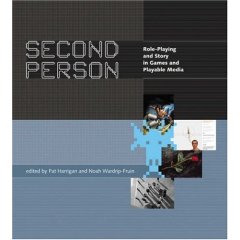Dear Slamdance festival organizers,
In recent years, the Slamdance film festival has become a major gathering for independent gamemakers. We were honored to have our games selected as finalists for this year’s Slamdance Guerilla Gamemaker Competition, and were looking forward to meeting our fellow gamemakers, filmmakers, and other festivalgoers in a context where our work was seen as legitimate, artistic, and meaningful.
Recently, the festival has made the decision to remove one of the finalists, Super Columbine Massacre RPG! by Danny Ledonne, from the competition – after this game was solicited by festival organizers, chosen by a jury, and publicized as a finalist. We have been unable to find mention of any other film, game, or screenplay that has been pulled from Slamdance at any point in the past, making this an unfortunate first for the festival.
We object to this decision and strongly urge the festival organizers to reinstate the game in the festival. It is legitimate for games to take on difficult topics and to challenge conventional ideas about what video games can do. No game should be rejected for moral or other reasons after a panel of judges has found the game to be of artistic merit and worthy of inclusion in the festival. We find it very unlikely that a similar decision would have been made about a jury-selected film, and see this decision as hurting the legitimacy of games as a form of expression, exploration, and experience.
This is a preview of
From Slamdance Games Finalists
.
Read the full post.
 A piece of LED art, referring to the Aqua Teen Hunger Force, seems to have been “neutralized” by a Boston police bomb squad. Police have found several other devices, presumably the same Lite-Brite-style artworks. And it seems they now have declared the devices part of a hoax that is “not funny.” A caption in that last article claims that at least of the devices was “detonated.” The news about this one came to me from Joe Shaw.
A piece of LED art, referring to the Aqua Teen Hunger Force, seems to have been “neutralized” by a Boston police bomb squad. Police have found several other devices, presumably the same Lite-Brite-style artworks. And it seems they now have declared the devices part of a hoax that is “not funny.” A caption in that last article claims that at least of the devices was “detonated.” The news about this one came to me from Joe Shaw. 


 Journalist extraordinaire Clive Thompson (
Journalist extraordinaire Clive Thompson (


 I have 30 hand-labeled USB flash drives that contain
I have 30 hand-labeled USB flash drives that contain 
